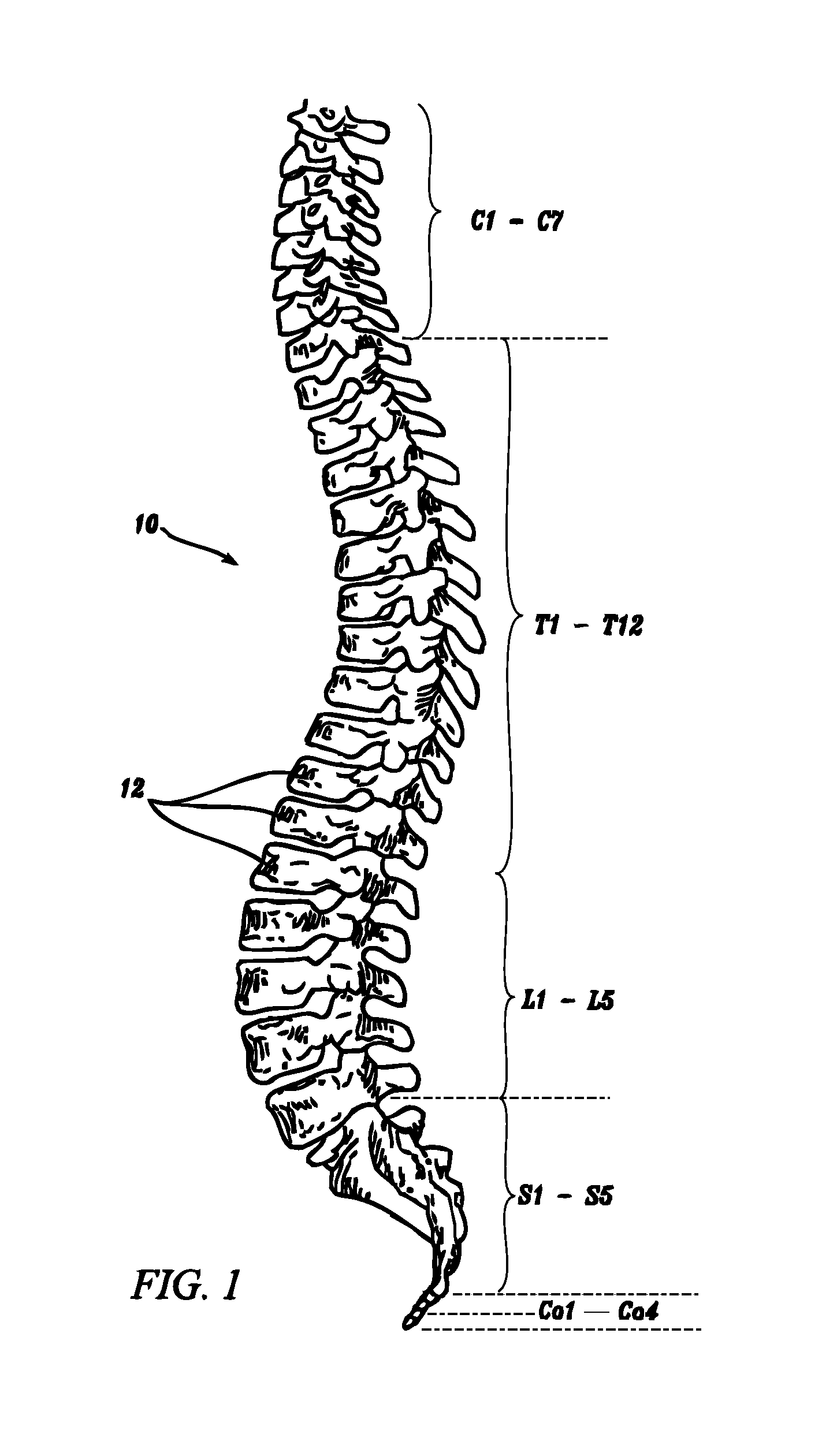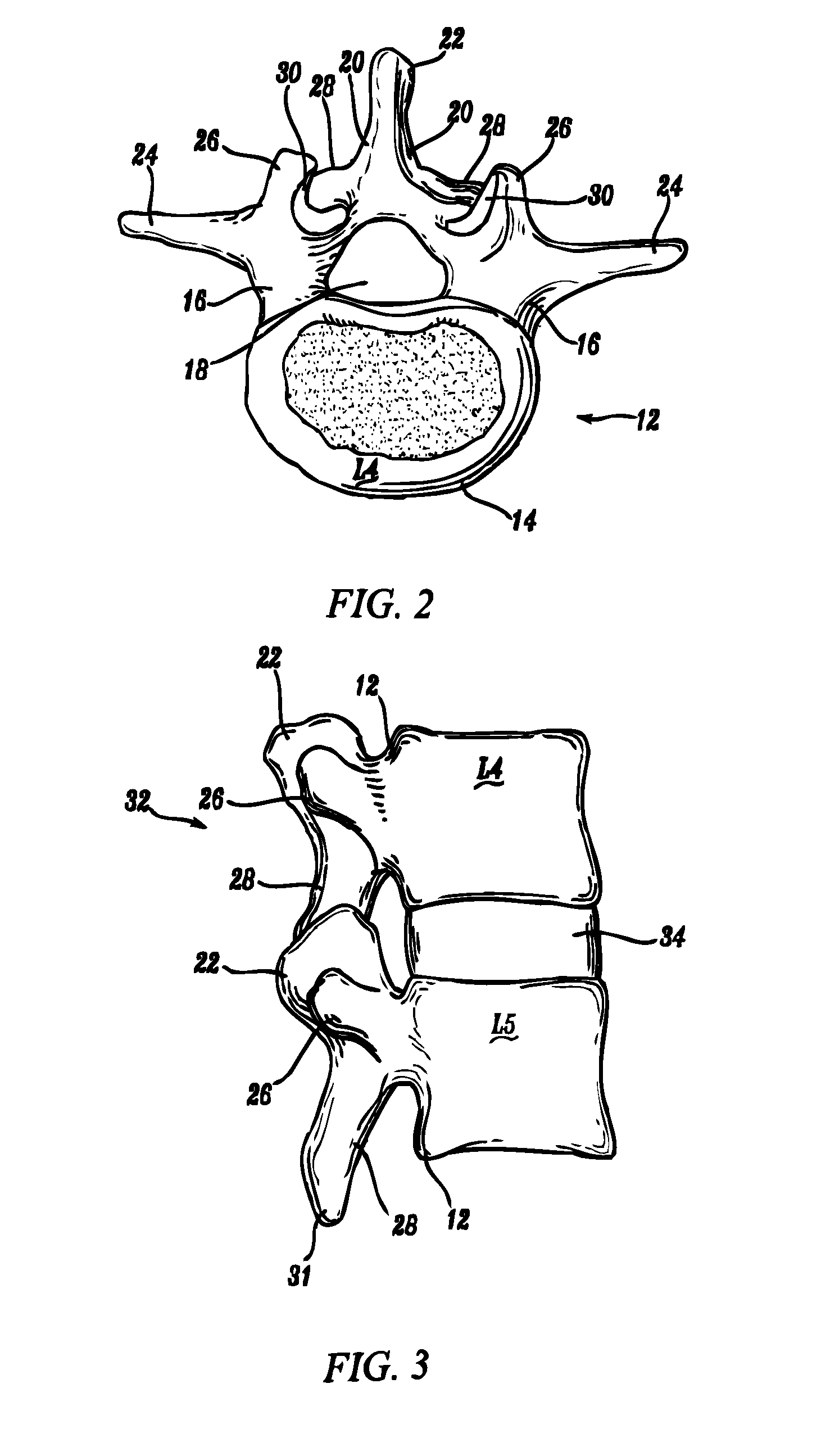Anti-rotation fixation element for spinal prostheses
a technology of spinal prosthesis and fixation element, which is applied in the field of spinal prosthesis attachment to spinal vertebrae, can solve the problems of severe limitations on the functional ability and quality of life of people, damage to spinous process, articular process, and vertebrae no longer articulating or properly aligning with each other, so as to relieve the compression or impingement of the source nerve, and lessen or alleviate spinal pain.
- Summary
- Abstract
- Description
- Claims
- Application Information
AI Technical Summary
Benefits of technology
Problems solved by technology
Method used
Image
Examples
Embodiment Construction
[0078]Although the disclosure presented herein provides details to enable those skilled in the art to practice various embodiments of the invention, the physical embodiments disclosed herein merely exemplify the invention, which may be embodied in other specific structure. Accordingly, while preferred embodiments of the invention are described below, details of the preferred embodiments may be altered without departing from the invention. All embodiments that fall within the meaning and scope of the appended claims, and equivalents thereto, are intended to be embraced by the claims.
[0079]Embodiments of the present invention may be used, with advantage, on a wide variety of prosthesis devices, particularly spinal prostheses. Some of these prostheses, systems, and methods are discussed in the following applications entitled: “Facet Arthroplasty Devices And Methods”, by Mark A. Reiley, Ser. No. 09 / 693,272, filed Oct. 20, 2000, now U.S. Pat. No. 6,610,091, issued Aug. 26, 2003; “Prosthe...
PUM
 Login to View More
Login to View More Abstract
Description
Claims
Application Information
 Login to View More
Login to View More - R&D
- Intellectual Property
- Life Sciences
- Materials
- Tech Scout
- Unparalleled Data Quality
- Higher Quality Content
- 60% Fewer Hallucinations
Browse by: Latest US Patents, China's latest patents, Technical Efficacy Thesaurus, Application Domain, Technology Topic, Popular Technical Reports.
© 2025 PatSnap. All rights reserved.Legal|Privacy policy|Modern Slavery Act Transparency Statement|Sitemap|About US| Contact US: help@patsnap.com



